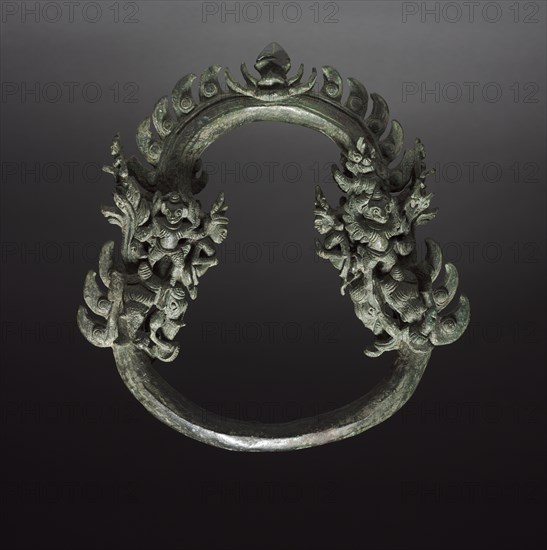
Sujet
Palanquin Ring, 1100s-1200s. Creator: Unknown.
Légende
Palanquin Ring, 1100s-1200s. When members of the royal family or priesthood traveled in a public festival procession or to a temple like Banteay Chhmar to make offerings or participate in a ceremony, they would be carried in a palanquin, or a covered litter. Portable objects of veneration, such as bronze images or a sacred fire, were also carried on palanquins. The palanquins had wooden poles, hanging seats or raised platforms, and bronze fittings cast in intricate forms and gilt, lending the palanquins a sumptuous quality. This ring, which supported a suspended seat, would have hung on a hook attached to a wooden pole. The body of the ring is shaped in the form of a pair of nagas , or serpents. The flanges, or protrusions, on the top and sides are stylized spines of the serpent?s body, and the heads rear up on either side. In a richly textured cluster of separately cast figures on both sides of the ring are images of composite bird-human, monkey-human, and elephant forms.
Crédit
Photo12/Heritage Images/Heritage Art
Notre référence
HRM19F98_105
Model release
NA
Property release
NA
Licence
Droits gérés
Format disponible
51,1Mo (3,1Mo) / 35,7cm x 35,9cm / 4217 x 4237 (300dpi)